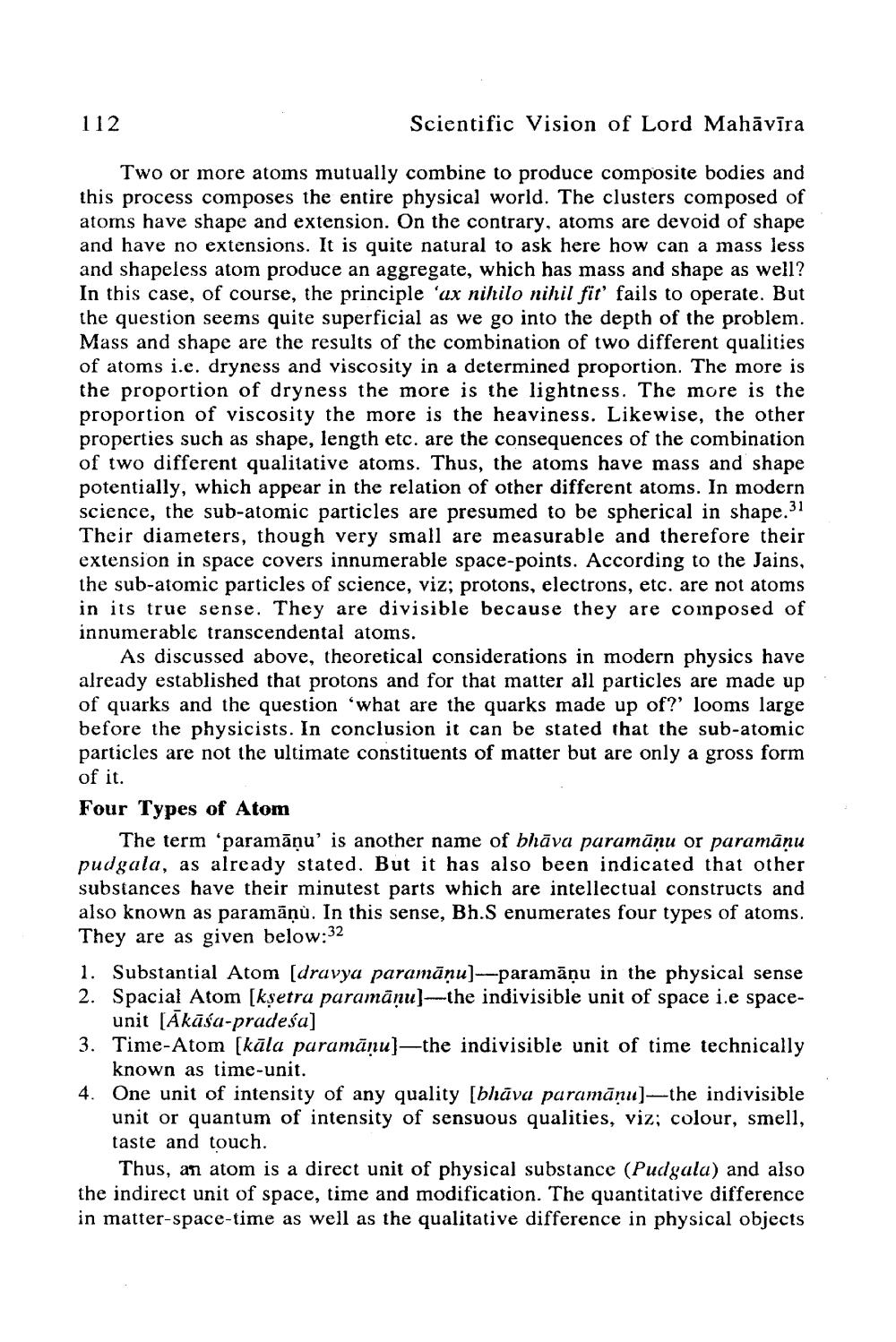________________
112
Scientific Vision of Lord Mahāvīra
Two or more atoms mutually combine to produce composite bodies and this process composes the entire physical world. The clusters composed of atoms have shape and extension. On the contrary, atoms are devoid of shape and have no extensions. It is quite natural to ask here how can a mass less and shapeless atom produce an aggregate, which has mass and shape as well? In this case, of course, the principle fax nihilo nihil fit' fails to operate. But the question seems quite superficial as we go into the depth of the problem. Mass and shape are the results of the combination of two different qualities of atoms i.e. dryness and viscosity in a determined proportion. The more is the proportion of dryness the more is the lightness. The more is the proportion of viscosity the more is the heaviness. Likewise, the other properties such as shape, length etc. are the consequences of the combination of two different qualitative atoms. Thus, the atoms have mass and shape potentially, which appear in the relation of other different atoms. In modern science, the sub-atomic particles are presumed to be spherical in shape.31 Their diameters, though very small are measurable and therefore their extension in space covers innumerable space-points. According to the Jains, the sub-atomic particles of science, viz; protons, electrons, etc. are not atoms in its true sense. They are divisible because they are composed of innumerable transcendental atoms.
As discussed above, theoretical considerations in modern physics have already established that protons and for that matter all particles are made up of quarks and the question 'what are the quarks made up of?' looms large before the physicists. In conclusion it can be stated that the sub-atomic particles are not the ultimate constituents of matter but are only a gross form of it. Four Types of Atom
The term 'paramāņu' is another name of bhāva paramānu or paramāņu pudgala, as already stated. But it has also been indicated that other substances have their minutest parts which are intellectual constructs and also known as paramāņù. In this sense, Bh.S enumerates four types of atoms. They are as given below:32 1. Substantial Atom (dravya paramānu)--paramāņu in the physical sense 2. Spacial Atom (kşetra paramāņu)-the indivisible unit of space i.e space
unit (Akāśa-pradeśa] 3. Time-Atom (kāla paramāņu]—the indivisible unit of time technically
known as time-unit. One unit of intensity of any quality [bhāva paramānu)-the indivisible unit or quantum of intensity of sensuous qualities, viz; colour, smell, taste and touch.
Thus, an atom is a direct unit of physical substance (Pudgala) and also the indirect unit of space, time and modification. The quantitative difference in matter-space-time as well as the qualitative difference in physical objects
a touch.




